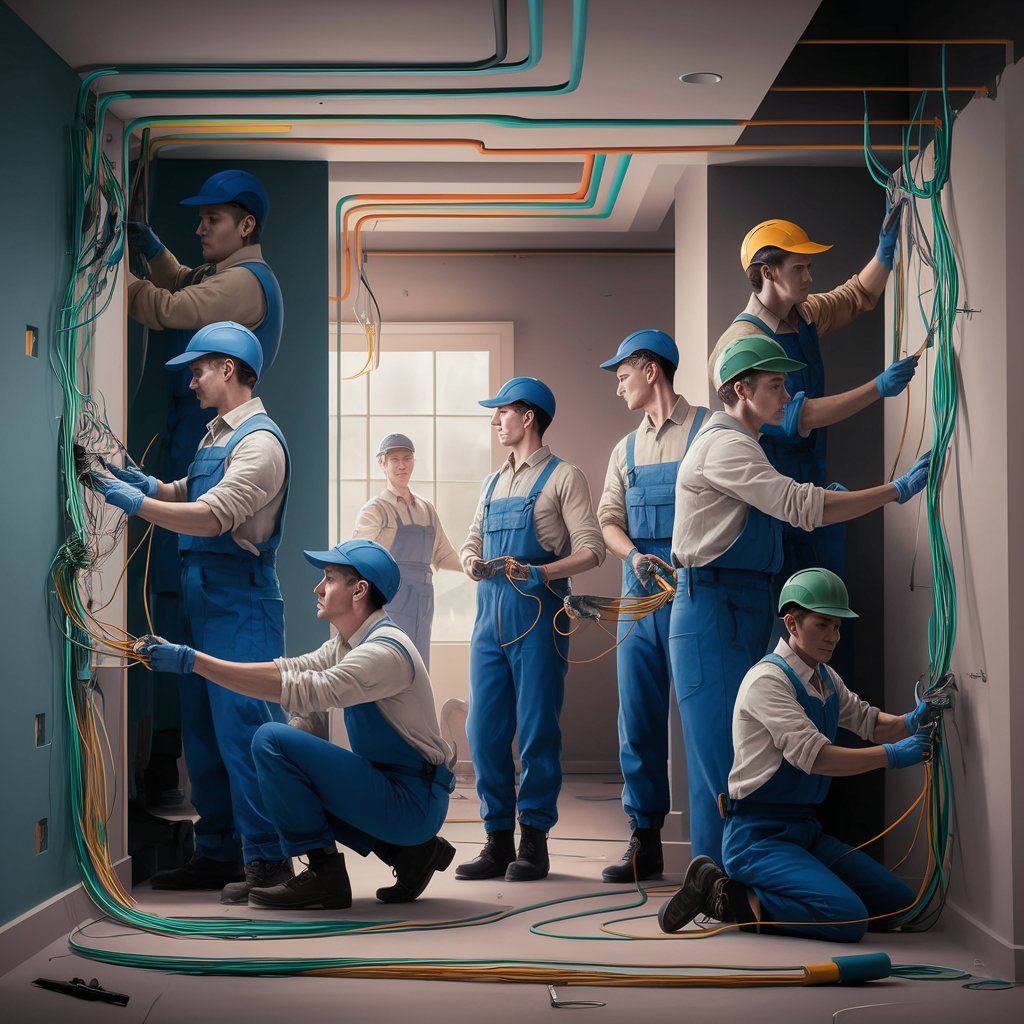Concerned about upgrading outdated wiring connections ? You’re not alone; it’s a widespread issue. We have practical solutions for you. In this guide, discover five easy upgrades. Each one is quick and efficient. Dive in to make your home safer today!
1. Assess Current Wiring Setup
1.1 Identify outdated wiring
Hey there, homeowner! Let’s start by taking a good look at your current wiring situation. Upgrading outdated wiring connections can be a real headache, not to mention a safety hazard. Here’s what to keep an eye out for:
- Knob-and-tube wiring: This old-school system was common before the 1950s.
- Aluminum wiring: Popular in the 60s and 70s, but can be risky.
- Two-prong outlets: These don’t have a ground wire, which is essential for safety.
If you spot any of these in your home, it’s time to consider an upgrade. Trust me, your future self will thank you!

1.2 Check for wear and tear
Now, let’s play detective and look for signs of wear and tear. Even if your wiring isn’t super old, it might still need some TLC. Here’s what to look out for:
- Frayed or cracked wire insulation
- Discolored outlet covers or switch plates
- Burning smells or buzzing sounds from outlets
- Frequent circuit breaker trips
I once had a client who ignored a slightly discolored outlet cover. Turns out, it was hiding a serious wiring issue that could have led to a fire. Don’t be that person!
2. Replace Old Wires
2.1 Select modern wire types
Out with the old, in with the new! When it comes to replacing those outdated wires, you’ve got some great options:
- Copper wiring: This is the gold standard (well, copper standard) for modern homes.
- NM (non-metallic) cable: Also known as Romex, this is perfect for most residential applications.
- THHN wire: This is your go-to for running through conduit.
Remember, the right wire type depends on your specific needs and local codes. When in doubt, ask a pro!
2.2 Hire a licensed electrician
I know, I know. The DIY spirit is strong. But when it comes to electrical work, it’s best to leave it to the experts. A licensed electrician will:
- Ensure all work is up to code
- Have the right tools and knowledge for a safe installation
- Provide a warranty for their work
Think of it this way: the cost of hiring a pro is way less than the potential cost of a DIY electrical mishap. Safety first, folks!

3. Update Electrical Panels
3.1 Evaluate the current panel
Your electrical panel is like the heart of your home’s electrical system. If it’s not up to snuff, the whole system suffers. Here’s how to give it a quick check-up:
- Look at the amperage: Most modern homes need at least 100 amps, but 200 is better.
- Check for rust or corrosion
- See if there’s room for expansion
If your panel is maxed out or showing signs of wear, it might be time for an upgrading outdated wiring connection .
3.2 Install a new breaker panel
Upgrading your breaker panel is like giving your home’s electrical system a power boost. A new panel can:
- Handle more power
- Accommodate new circuits for modern appliances
- Improve overall electrical safety
I remember upgrading my own panel a few years back. It was like night and day – no more flickering lights when the AC kicked on!
4. Install Ground Fault Circuit Interrupters (GFCIs)
4.1 Benefits of GFCIs
GFCIs are like little lifeguards for your electrical outlets. They’re always on duty, ready to shut off power at the first sign of trouble. Here’s why they’re awesome:
- They prevent electrical shocks
- They reduce the risk of electrical fires
- They’re required by code in many areas
I can’t tell you how many times I’ve been thankful for GFCIs in my own home, especially with kids around.
4.2 Where to install GFCIs
You don’t need GFCIs everywhere, but they’re crucial in certain areas:
- Bathrooms
- Kitchens
- Outdoor areas
- Garages and basements
Basically, anywhere water and electricity might mix, you want a GFCI on duty.
5. Upgrade Outlets and Switches
5.1 Choose modern outlets
Upgrading your outlets is like giving your home a mini facelift. Plus, it comes with some cool perks:
- Three-prong outlets for better grounding
- USB outlets for easy device charging
- Tamper-resistant outlets for child safety
I recently switched to USB outlets in my bedroom, and let me tell you, it’s a game-changer for phone charging!
5.2 Install smart switches
Welcome to the future! Smart switches can add a whole new level of convenience to your home:
- Control lights from your phone
- Set schedules for automatic on/off
- Integrate with voice assistants like Alexa or Google Home
I installed smart switches in my living room last year, and being able to turn off the lights without getting up from the couch is pretty sweet.
Conclusion
6.1 Recap key points
Let’s do a quick rundown of what we’ve covered:
- Assess your current wiring
- Replace old wires with modern ones
- Update your electrical panel
- Install GFCIs in key areas
- Upgrade to modern outlets and smart switches
6.2 Encourage timely upgrades
Remember, electrical upgrades aren’t just about convenience – they’re about safety too. Don’t wait for a problem to pop up before taking action. A little proactive care now can save you a lot of headaches (and potential dangers) down the road.

So, why not start with one small upgrade today? Your future self (and your family) will thank you!
Thanks for reading our blog on Upgrading Outdated Wiring Connections.
Read More: https://thoughtsvista.com/



